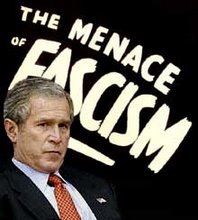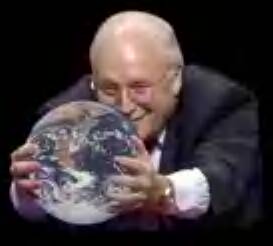While Billions were simply thrown at Wall Street corporate Banker type chumps with no oversight, no nothing, just Henry Paulson saying one thing and doing another. Of course, what the hell did Congress expect. That is what members of the Bush administration have done from the first day of their first term, legitimate or not.
December 19, 2008
WASHINGTON — The White House raised for the first time on Thursday the prospect of forcing General Motors and Chrysler into a managed bankruptcy as a solution to save the companies from financial collapse.
President Bush’s spokeswoman, Dana Perino, confirmed growing speculation within legal circles that the president and Treasury Secretary Henry M. Paulson Jr. were considering the step.
“There’s an orderly way to do bankruptcies that provides for more of a soft landing,” Ms. Perino said. “I think that’s what we would be talking about. That would be one of the options.”
A senior administration official, however, later described that option as a last resort, to be used only if an agreement for a voluntary overhaul of the industry could not be reached.
These officials said the preferred solution would be to force a restructuring of the industry outside of bankruptcy court, extracting concessions that would make the companies more cost-competitive with foreign automakers.
In return, the Treasury would tap the financial rescue fund, called the Troubled Asset Relief Program, to make loans to the companies.
After a week of talks between the automakers and the Treasury Department over the terms of a possible bailout, Ms. Perino on Thursday said, “we’re very close.”
President Bush, speaking at the American Enterprise Institute, an organization dedicated to free market principles, said that he had determined that the economy was too fragile to allow G.M. and Chrysler to fail. The companies have warned that will happen if they do not receive financial aid soon.
In his speech Thursday, Mr. Bush made clear that he wanted to avoid a “disorderly bankruptcy” because of “what it would do to the psychology of the markets.” But he also said he was “worried about putting good money after bad,” and suggested he would only approve a plan that allowed the auto companies to “become viable in the future.”
Mr. Bush’s comments, a month before he leaves office, made clear that he was worried by the idea of returning to Texas amid more economic chaos and the surge in unemployment that a collapse of the companies could cause.
“The autos obviously are very fragile,” he said. He added that he was concerned about what President-elect Barack Obama would face on Jan. 20. “I believe that good policy is not to dump him a major catastrophe in his first day of office,” he said.
What the White House appears to be envisaging is a package deal of concessions — and an injection of money from the TARP, the $700 billion financial bailout fund — to keep credit flowing for G.M. and Chrysler.
Taxpayer loans, the White House has said, would have first priority over all other debt. Ms. Perino said the goal was to “try to come up with something that would protect the taxpayers but not allow a collapse that would hurt everybody in America.”
But for Mr. Bush, that could be difficult to negotiate. If the autoworkers’ unions conclude they are likely to get a better deal from Mr. Obama, they are likely to stall negotiations and settle for a shorter-term loan.
After the White House raised the possibility of a bankruptcy, G.M.’s shares fell to $3.66.
Investors may have also been reacting to a report in The Wall Street Journal that said G.M. had restarted merger discussions with Chrysler. But a G.M. spokesman, Tony Cervone, said the automaker had not held any talks with Chrysler since late October, when G.M. suspended discussions because of its bleak financial condition. “Nothing has changed,” he said.
G.M. declined to comment on the Bush administration’s suggestion that an “orderly bankruptcy” was under consideration. But the company was surprised by the White House statements, according to G.M. officials who asked not to be identified because the discussions with the administration were not yet final.
The automaker’s senior executives have said repeatedly that bankruptcy was not a viable solution because consumers would be reluctant to buy a vehicle from a bankrupt automaker.
In July, CNW Marketing Research said a survey it conducted showed that 80 percent of prospective car buyers would not consider purchasing a vehicle from a bankrupt company. A more recent survey found that 51 percent of the people it interviewed said they would not buy a car from G.M. even if it received a government bailout.
“G.M. cannot afford to lose half of its prospective customers,” said Art Spinella, CNW’s president.
Spokesmen for Chrysler and Ford also declined to comment specifically on the inclusion of bankruptcy as an alternative.
Chrysler’s chairman, Robert L. Nardelli, has said that getting financing to reorganize in bankruptcy would be difficult given tight credit conditions. Ford is not seeking immediate government help.
There was no immediate comment from the United Automobile Workers union.
In a traditional bankruptcy proceeding, the U.A.W.’s contracts could be voided and the union forced to renegotiate benefits like health care.
The union’s president, Ron Gettelfinger, has said the U.A.W. is willing to make concessions if G.M. or Chrysler gets government loans that help them survive.
But Mr. Gettelfinger has said he believes that bankruptcy would cripple either company’s ability to sell cars. “There’s no question in my mind that people would not buy their vehicles,” he said in an interview.
Both companies are cutting production to stretch their available cash. On Friday, Chrysler will begin an unusual monthlong shutdown of all of its North American manufacturing plants in a bid to save money.
Legal experts said Thursday that despite discussion of an out-of-court solution, a revamping of G.M. and Chrysler might be difficult to accomplish outside of bankruptcy court, given the significant steps an overhaul would require.
“It’s not going to be easy, it’s not going to be pleasant, or palatable, but it’s the only solution that makes the least bit of sense,” said Hugh M. Ray, head of the bankruptcy practice at the Houston law firm Andrews Kurth, who has participated in major bankruptcy cases.
If the companies were to file for bankruptcy, major banks would provide financing, with federal funds as security for the bank loans for the companies to operate.
Some lawyers have suggested that the two companies could receive $25 billion, using $5 billion in federal funds to guarantee the banks’ loans, although auto industry analysts said the companies might need more.
G.M. has retained Harvey R. Miller, a longtime bankruptcy lawyer, as its adviser. It is also being advised by William Repko, an expert in restructuring with Evercore Partners who has worked with companies like United Airlines. G.M. is also working with Arthur B. Newman of the Blackstone Group.
Chrysler has retained the law firm of Jones Day to provide revamping expertise.
Mr. Ray said that a number of airlines went through bankruptcy protection earlier this decade, using federally backed loans awarded by the Air Transportation Stabilization Board, which was set up to aid the industry after the September 2001 attacks.
The board turned down United’s request, however, and the airline subsequently restructured under bankruptcy protection without federal money.
“United is still flying, and G.M. is not doing very well,” Mr. Ray said. “Their chickens have come home to roost, and now it’s inevitable” that G.M. seek bankruptcy protection, he added.
David E. Sanger reported from
Washington and
Bill Vlasic and
Micheline Maynard from
Detroit.
(In accordance with Title 17 U.S.C. Section 107, this material is distributed without profit to those who have expressed a prior interest in receiving the included information for research and educational purposes. I.U. has no affiliation whatsoever with the originator of this article nor is I.U endorsed or sponsored by the originator.)
The Nazis, Fascists and Communists were political parties before they became enemies of liberty and mass murderers.



No comments:
Post a Comment